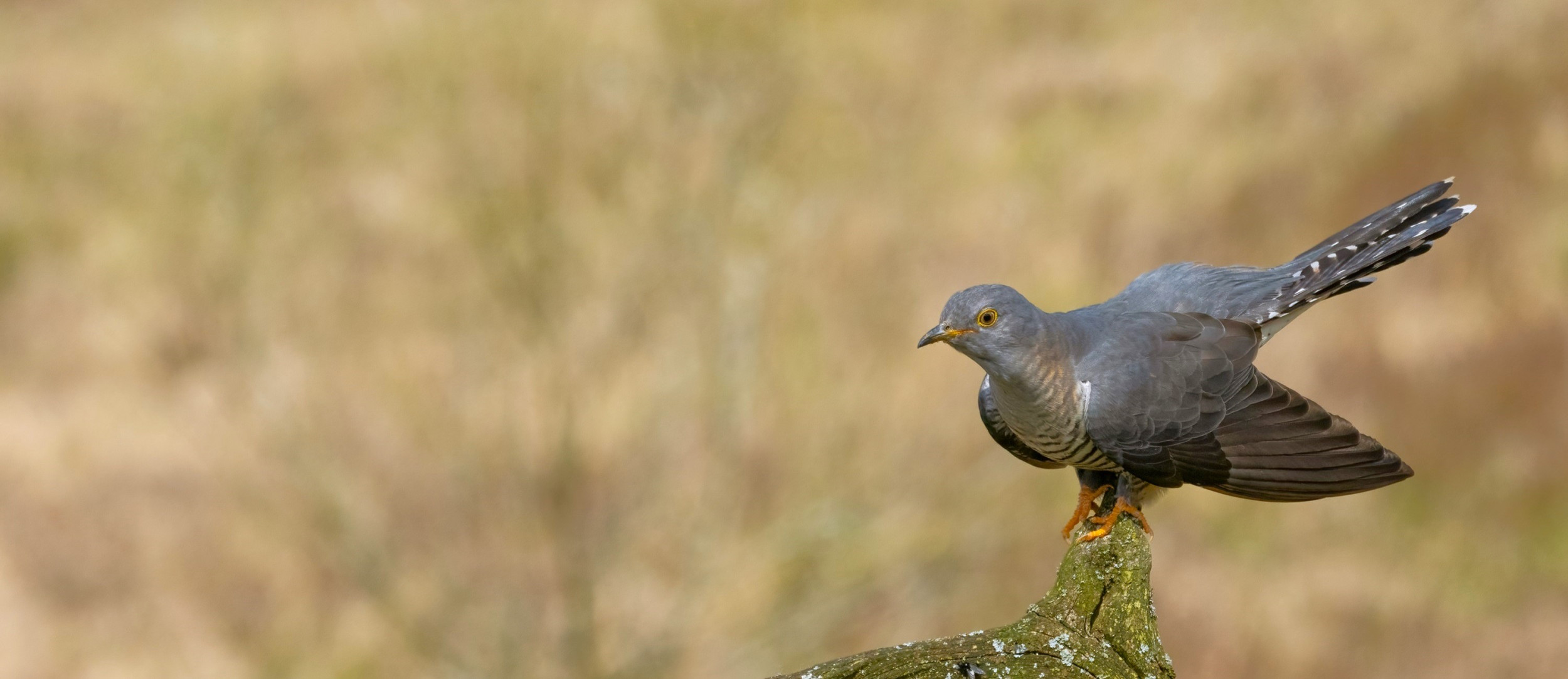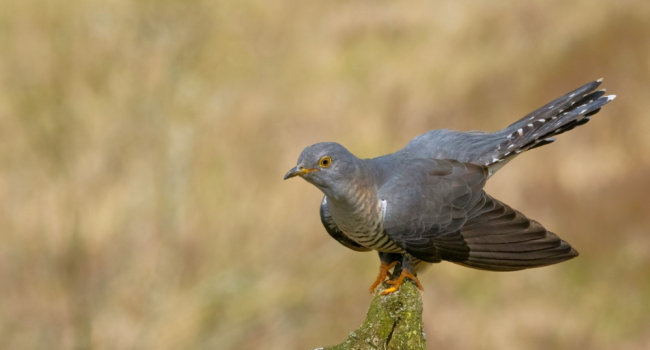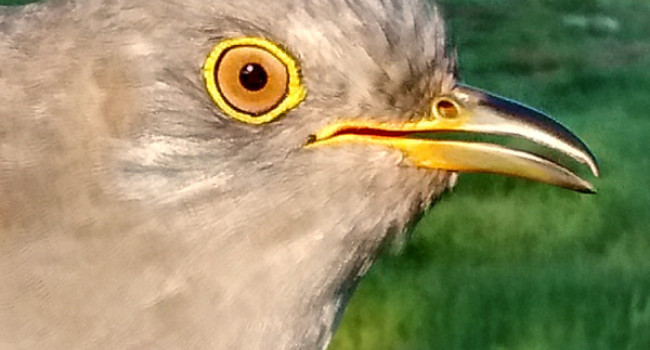Selborne was south of the Sierra Morena Mountains by the early hours of the morning of 22 July. He stayed in the area around Jaén until around 10am and the next signal we received was two days later when he was in Algeria, over 700km (435 miles) further south. A series of locations throughout the 24 and into the morning of 25 show him steadily making his desert crossing of 1590km (990 miles). The last location on 25 shows him in southern Mauritania, close to the border with Mali but a further signal today shows he had reached a location just north of Segou, in southern Mali, and completed his desert crossing.
Updates from our Cuckoos
Read the latest updates from our Cuckoos on their epic migration between the UK and tropical Africa, or track their movements in real-time on our Cuckoo migration map.
- If you enjoy these updates, please consider sponsoring a Cuckoo. Sponsors receive special updates about their chosen Cuckoo in the Cuckoo e-newsletter.
Selborne crosses desert
26 Jul 2017
Where is Larry?
26 Jul 2017
The area of southern Italy, from where Larry has been transmitting recently, has been exceptionally dry this year - more so even than normally. He's used this site, which is much further south than other cuckoo stopovers, in the previous two autumns and we were surprised when he first stopped off here. The most recent signals we received show a poor quality location in Poland, but we aren't yet sure whether this is a true movement, and a reflection on these dry conditions. We await more information that will allow us to confirm his location.
170432 to be known as Samson
26 Jul 2017
Cuckoo 170432 is in Africa and is now to be known as Samson. He has been named by TV wildlife presenter Martin Hughes-Games after his son. Samson was in Spain but a recent signal on the afternoon of 21 July shows he had completed his desert crossing and was in Mali. From here he then moved on 420km (by 260miles) to Burkina Faso, where Victor is also located. He is currently between the Red and the White Volta Rivers and just north of the town of Bane.
Cuckoo 170435 is named
26 Jul 2017
Cuckoo 170435 has been named Nicholas by Nicholas Watts of Vine House Farm, a long term supporter of the BTO, a farmer and conservationist in the Lincolnshire Fens growing and selling wild bird food.
Victor in North Africa
17 Jul 2017
A series of locations received from Victor's tag on the evening of 16 July showed that he had left central Spain and was in North Africa, in northwest Algeria, on the northern edge of the Sahara.
PJ crossing the Sahara
17 Jul 2017
At 19:23 on Friday 14 July we received a location from PJ's tag that showed he was close to the coast of southern France to the west of Toulon. At 20:45 he was 46km (28 miles) to the south of here and over the sea. The last location we received before his tag powered down was at 01:41 on 15 July and he was about half-way through his crossing of the Mediterranean. We next heard from him at 16.14 on 16 July when he was in the middle of the Sahara in southern Algeria. He didn't stop here, and by 08:53 on 17 July he was in Niger and around 500km (350 miles) short of successfully completing his desert crossing. Between Friday evening and early on Monday morning, he travelled 2,900km (1,800 miles) at an average speed of 47kph (30mph). Fingers crossed, when we next hear from his tag he will have completed his desert crossing.
PJ on the move
13 Jul 2017
PJ has moved south within France and is now now on the border with France and Switzerland, north-west of Geneva and south of Lake Geneva itself. He is currently moving around an area of woodland to the south of Loisin. He is 65km (40 miles) northwest of where the French, Swiss and Italian borders meet in the Alps.
Cutting edge technology 2g tags
13 Jul 2017
In spring we fitted our six new recruits to the UK Cuckoo Tracking Project with 2g satellite tags for the first time. Whilst these are similar in design to the 5g tags previously used, the lighter, smaller tags mean we are able to fit them to lighter and smaller birds, opening up opportunities for future tracking projects. The benefit of using a smaller tag does come with costs, however. The 2g tag has a lower power output than the larger tag and, because it is physically smaller we are finding that the solar panels are being covered to a greater extent by the bird’s feathers. This results in fewer and poorer quality locations, especially when the bird is under cover within its habitat. As a consequence the journeys of these new birds might not always be quite as easy to follow and some erroneous positions may be plotted on the maps. We still expect to get enough to enable us to see their migrations unfold and add to the wealth of information that we already have so stay tuned!
Peckham is on his way
13 Jul 2017
Peckham's last location close to Nottingham was on 7 July, however, when we next heard from him on 9 July he had moved 149km (93 miles) in a south easterly direction and was close to Hoddesdon in Hertfordshire. Two days later Peckham's tag began transmitting again and he was on the east coast in Suffolk, close to Ipswich. The weather at the time was appalling with almost constant heavy rain. It might have been that Peckham was going to attempt to cross the North Sea but instead, probably as a consequence of the rain, he began moving up the Suffolk coast and by the early evening had settled close to the Norfolk border near Ringsfield. It would seem that the rain thwarted his exit from the UK and we will have to wait until we hear from him again to see if he has been able to continue on his journey south.
170432 in Spain not Sicily
13 Jul 2017
We thought 170432 was close to Sicily but having transmitted over the sea and not having moved onwards to land this raised a few questions! We took another look at the signals, all of which were of low quality, and found a much more likely scenario from another transmission - he was on land and actually in Spain. Some of you may have noticed the position has since been updated.
The new tags are working in a different way to those used previously so we are still getting used to this. The 2g tag has a lower power output than the larger tag and because it is physically smaller we are finding that the solar panels are being covered to a greater extent by the bird’s feathers. This results in fewer and poorer quality locations, especially when the bird is under cover within its habitat, so more interpretation is needed. This is new cutting edge technology and this is the first time we've trialled them. The successful development and deployment of these tags opens up exciting opportunities for future tracking projects, and would allow us to fit them to lighter and smaller birds. Please bear with us while we get used to the new types of information we are receiving.





Share this page